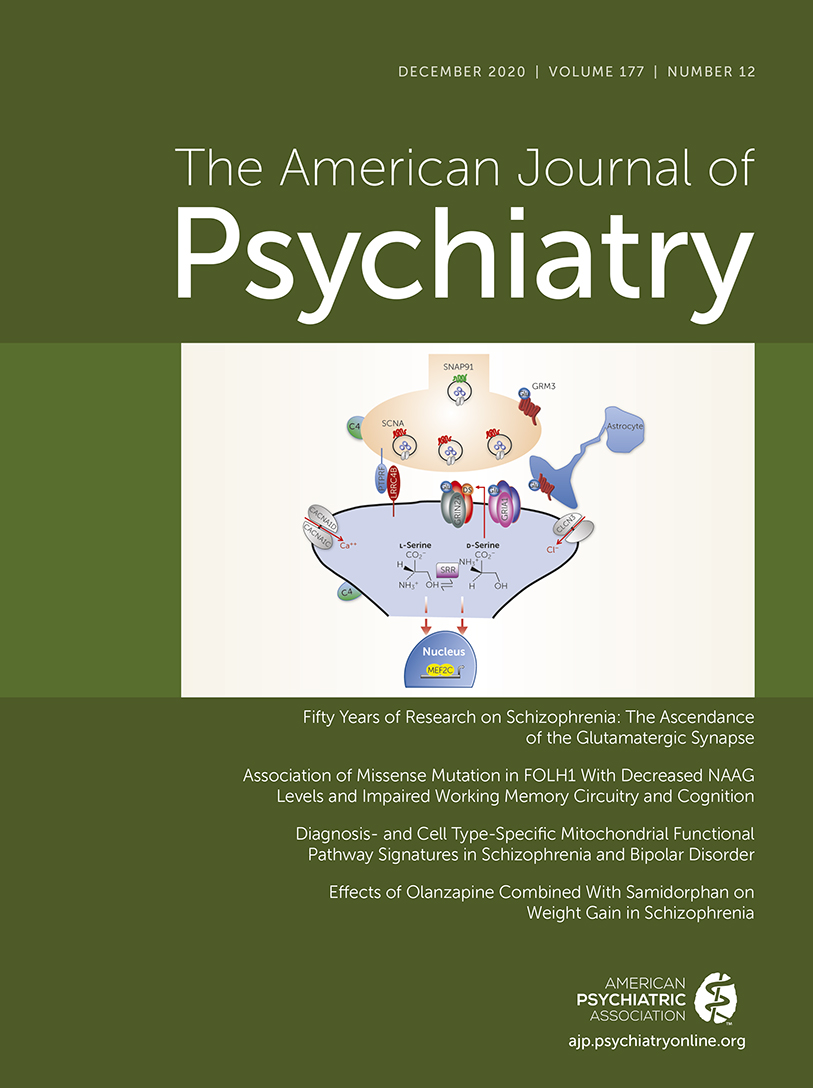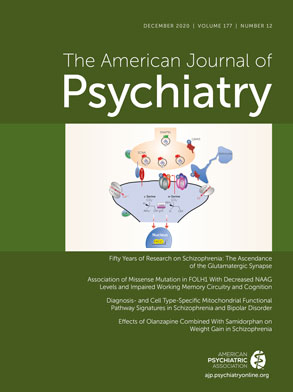To the Editor: We appreciate the opportunity to review the letter from Drs. Srihari, Guloksuz, and Friis, who have contributed much to our understanding of psychosis and its treatment. We agree with the authors that establishing causality requires experimental designs. We outline the contexts in which naturalistic studies have been, and continue to be, useful, and we address the writers’ concerns about confounding effects.
We agree that randomized clinical trials are the gold standard approach to test the effect of duration of untreated psychosis (DUP) on outcomes in psychotic disorders. However, the majority of randomized clinical trials have not been successful in reducing DUP (
1) and thus do not inform our understanding of the causal role of DUP. To our knowledge, only the Treatment and Intervention in Psychosis (TIPS) study (
2) effectively manipulated DUP and was able to examine the effect of this intervention on illness course.
We also agree with the authors that establishing the causality of DUP requires an experimental design, but we maintain that studying the effects of lead-time bias on the association between DUP and illness course does not. Lead-time bias is possible whenever there is a gap between symptom onset and detection or treatment. This gap can be observed in an experimental or a naturalistic design, and indeed, naturalistic studies form the foundation of this literature. The association between DUP and illness course in schizophrenia was first observed in a naturalistic study at Northwick Park (
3). Subsequent landmark studies of this phenomenon have also been naturalistic (
4–
6). We aimed to evaluate the interplay of lead-time bias, DUP, and illness course using a study design similar to that in which these associations were first identified. Our study was further strengthened by countywide representative sampling, collection of premorbid data, and long-term follow-up. Our finding raises questions about the inferences drawn from previous observational research. It also suggests two strategies for future research: reanalyses of observational studies to control for time since symptom onset, and designing randomized clinical trials to address the potential confounding effect of lead-time bias.
Dr. Srihari and colleagues note that observational studies reflect treatment available in the community, rather than that provided by most early intervention programs. We note that at each follow-up time point, at least 75% of the cohort received antipsychotic medication over the preceding interval (operationalized as using antipsychotic medication for at least 25% of the interval, although most participants used it during the entire interval). Medication data were carefully documented from self-report, pill bottles brought to follow-up appointments, and medical records. We agree that the treatment received by this cohort is less comprehensive than that received by patients in clinical trials. Nevertheless, our study is representative of, and important for understanding, the current state of interventions for schizophrenia in the community. It also underscores the need to implement better systems for delivering care for schizophrenia.
Naturalistic studies are vulnerable, as Dr. Srihari and colleagues note, to various forms of confounding. DUP could be associated with factors such as gender, race, or socioeconomic status, which may also affect adherence to treatment, leading to a pseudo lead-time bias. Fortunately, in the Suffolk County cohort, DUP was not associated with any of these factors (all p values >0.34). Furthermore, when analyses controlled for these factors, the pattern of results was unchanged. Should there be other factors associated with DUP, we note that they do not appear to have affected illness course, as DUP was not associated with either premorbid or long-term psychosocial function.
In sum, we agree with Drs. Srihari, Guloksuz, and Friis that randomized controlled trials of early intervention are crucial. At the same time, naturalistic designs have informed and will continue to inform this literature. From our analyses, it appears that evidence used to advance DUP as a treatment target is vulnerable to lead-time bias, and it is important to address this confounding factor.

